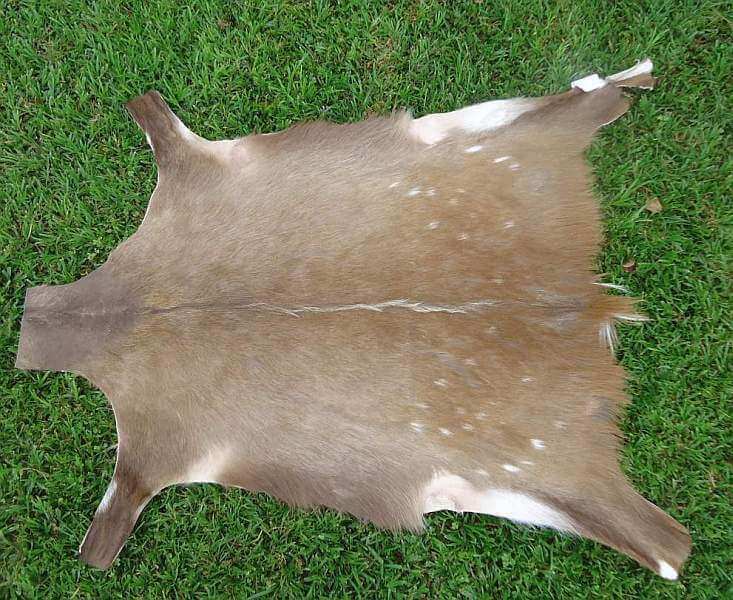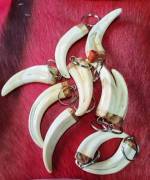African Bushbuck hide
African Bushbuck hide
Size: 110cm x 75cm (L x W)
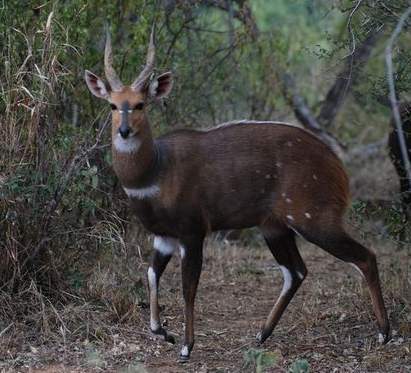 An A grade African Bushbuck skin that originates from South Africa. We hand select our Bushbuck skins so that you receive only top quality graded Bushbuck skin. The African Bushbuck roams in most South African game reserves and the hides are obtained during the culling season in South Africa. Bushbuck skins are CITES approved to ensure that there has been no illegal culling or poaching of these pelts. All Bushbuck skins require permits for export purposes. The price of the permit is included in the shipping cost.
An A grade African Bushbuck skin that originates from South Africa. We hand select our Bushbuck skins so that you receive only top quality graded Bushbuck skin. The African Bushbuck roams in most South African game reserves and the hides are obtained during the culling season in South Africa. Bushbuck skins are CITES approved to ensure that there has been no illegal culling or poaching of these pelts. All Bushbuck skins require permits for export purposes. The price of the permit is included in the shipping cost.
All sizes listed are approximate. The Bushbuck skin you purchase and receive may differ just slightly in size, look, and/or pattern from the Bushbuck skin shown in the picture because of the nature Bushbuck skin each skin is unique.
We are registered with KZN Wildlife in KwaZulu Natal, South Africa who are our local conservation authorities in our area, we obtain any documentation needed from them for any items that is needed for your country. You can feel assured that you have bought from a legal, registered trader.
Because of the nature of this type of products the pictures on this page are not the actual item you will receive The product will be similar with slight differences in size, look or color.
If you are looking for other African game skins return to our main African game skin page
Other information
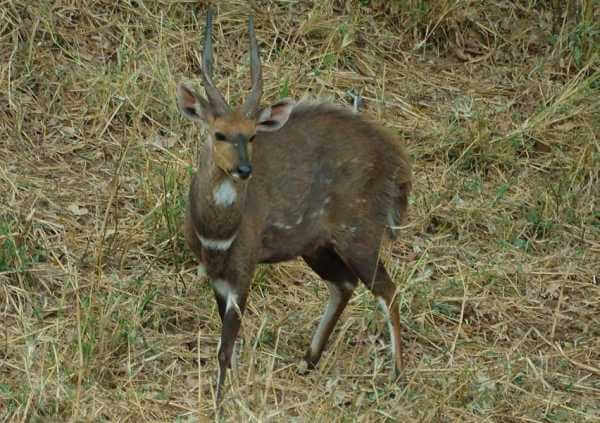
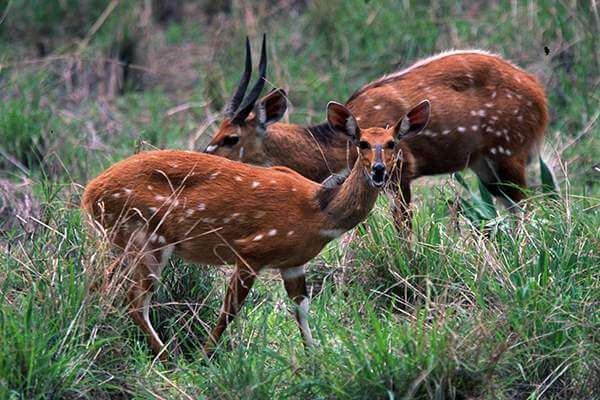
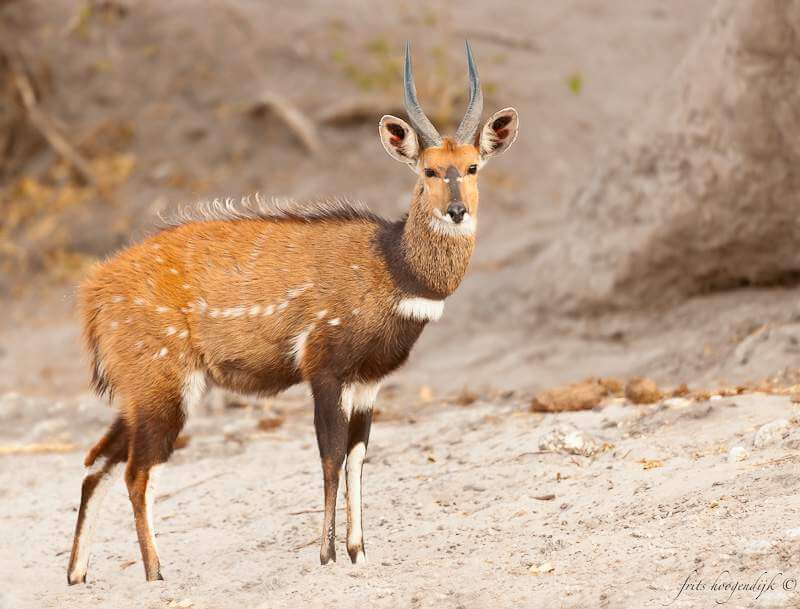
Facts about this animal
Close relative of the Kudu and Nyala, the Bushbuck is a rather large antelope which relies on vegetation for cover. Bushbuck can be found in in areas where it can easily be concealed. The shy and elusive Bushbuck is widely distributed over sub-Saharan Africa. In East Africa it is found in a variety of habitats, though rarely on open land. Bushbuck have a lot of individual and regional differences in their coat colors and patterns. As many as 40 varieties have been described. In general, Bushbuck inhabiting deep forest have darker coats.
All varieties and both males and females have geometrically shaped white patches or spots on the most mobile parts of the body – the ears, chin, tail, legs and neck, as well as a band of white at the base of the neck. Males make the markings more visible during their displays when they arch their backs and slowly circle one another, walking in a tense, high-stepping gait.
The very sharp horns render the Bushbuck very dangerous when wounded.
Because the Bushbuck is a forest-dwelling antelope, it is a browser, not a grazer. While grass certainly isn't off the menu, the Bushbuck's main diet consists of buds, shrubs and herbs, with the occasional snack of fruits, tubers and flowers thrown into the mix as well. It tends to be active more at night than during the day, especially if its forest home has humans living nearby, in which case the entire Bushbuck population of that region may be entirely nocturnal.
There are a lot of unique facts about Bushbuck. One of them is where they get their name from. Mother Bushbuck will actually hide their babies in bushes until they are up to four months old so as to hide them from predators. Also, female Bushbuck can grow horns as well as males, though it is less common. In most horn-bearing species, only one gender is able to bear horns. Another interesting fact is that you can tell how old a male Bushbuck is by his neck. If the male has patches on his neck that are rubbed bald, he is an older animal. He would have gained these bald patches from when his horns had rubbed against his neck as he lifted his head to move through the foliage.
Factsheet
Scientific classification
- Scientific Name: Tragelaphus scriptus
- Size: Male = stand 70-100 cm tall.; Female = 65-85 cm tall.
- Weight: Male = weigh 40-80 kg ; Female = 25-60 kg
- Lifespan: 12 years in the wild
- Habitat: Thick vegetation (mainly)
- Diet: Browser
- Gestation: 6-7 months
- Predators: Lions, cheetahs, hyenas, leopards
Conservation status: Least concern / abundant
